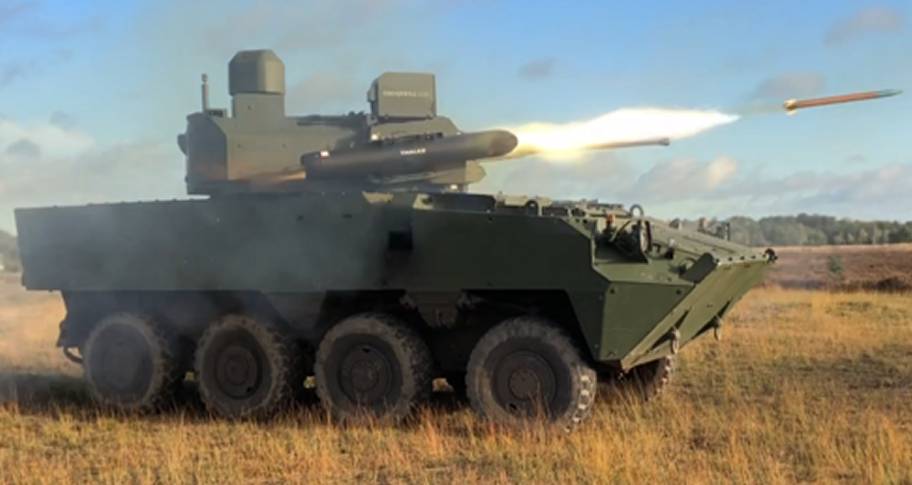John Cockerill Defense and Thales present new system combining cannon and rockets integrated into Cockerill 3030 turret
John Cockerill Defense and Thales are combining their skills and product portfolio for the first firing tests of a mixed cannon and 70mm rocket system integrated on a Cockerill 3030 turret.
Follow Army Recognition on Google News at this link

The new system combines the performance of the 30mm cannon from John Cockerill Defense and those of Thales's 70mm guided and unguided rockets (Picture source: John Cockerill Defense/Thales)
Drawing on their respective expertise in turrets and guns for John Cockerill Defense and airborne weapons systems for Thales, the integration of the two systems was completed in less than 6 months. This innovation combines the performance of the 30x173mm cannon from John Cockerill Defense and those of Thales's 70mm guided and unguided rockets. The assembly of the rocket system is carried out on a dedicated support and linked to the full field of use of the turret.
John Cockerill Defense’s Cockerill 3030 turret is fitted with a 30mm Mk44 cannon. Its efficiency is based on a unique rate and precision of fire and offers the most demanding reliability. The turret can hold 255 rounds of 30x173mm in the magazine. In addition, the Cockerill 3030 has the most advanced features such as Hunter-Killer, shooting while rolling and countermeasures at the customer's choice. This turret has already been sold several hundred copies around the world.
Rockets provide an operational complement linked to the flexibility of the use of guided and conventional ammunitions. The laser-guided rocket FZ275 LGR gives metric precision at a range of over 7km, thus limiting collateral damage to a minimum. On the other hand, unguided rockets allow zone saturation or warning fire at a range between 3 and 9 km.
The objective of this new combination is to demonstrate a new capacity on John Cockerill Defense's turrets with rockets (area saturation weapons and pin-point targeting) at a very attractive price compared to missiles and which are in different effectors as well as a version equipped with laser guidance for much higher accuracy of +/- 1m at a range of 6 km, reducing collateral damages. They are an effective alternative to missiles in certain types of ground-to-ground operations. The very long engagement distance (6 km effective range and up to a maximum of 9 km) and the large number of rockets integrated on a turret (2-7-12-19… rockets vs 2 missiles) are also significant advantages. A rocket of this type is not as powerful as a guided anti-tank missile but can destroy more lightly protected mobile vehicles or targets, infrastructure, command posts, large areas or render heavily armored targets inoperative by destroying their external sensors.




























